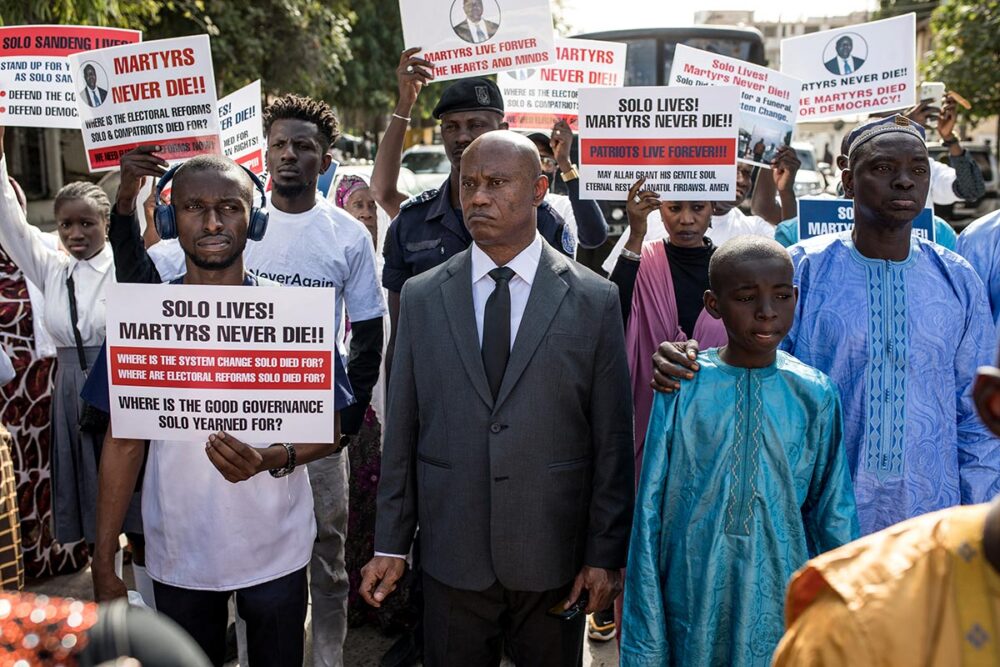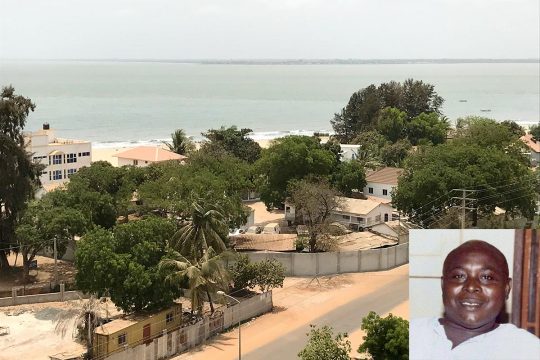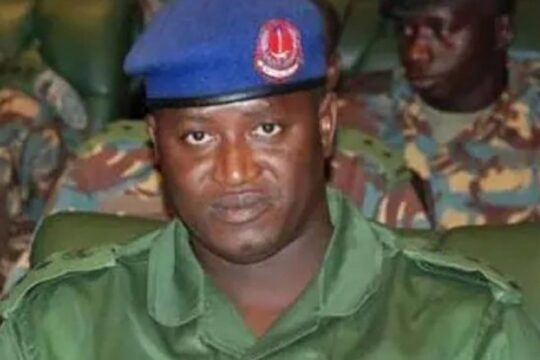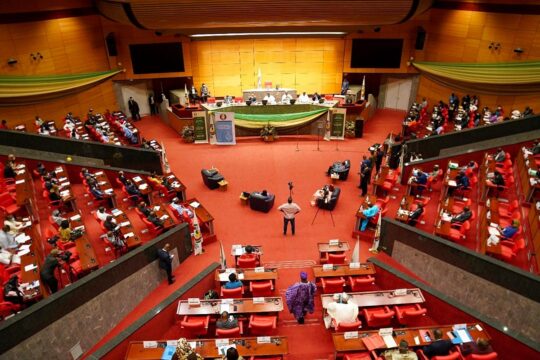Last week, the Federal Court of Bellinzona confronted Ousman Sonko with a ‘note’ seized from his suitcase on 26 January 2017 when he was arrested in Switzerland. After denying owning any notes throughout the entire proceedings, the former Minister of Interior in the Gambia admitted to the Swiss court that the note presented to him was his.
This piece of evidence was in connection to the April 2016 protest.
On April 14 2016, members of the United Democratic Party (UDP), the largest opposition party in The Gambia, staged a protest, leading to the detention of about 27 people, and torture of party members. Part of their demands was electoral reforms. Solo Sandeng, youth secretary of UDP, who was identified as the leader of the protest, died as a result of the brutal torture he was subjected to.
Excerpts from Sonko’s note include: “The president gave me a directive to harass and even kill the leader of the opposition and I refused to do so because I want to see a free and fair election”; “During the April 16 incident [a follow-up demonstration demanding for Sandeng’s release], he [Yahya Jammeh, president of The Gambia from July 1994 to January 2017] gave me a directive for the police to shoot and kill the opposition”; “The directive [asked] for those arrested by police to be handed over to the NIA [National Intelligence Agency], which I did.” “I fled for my safety.”
Explaining a partial admission
Sonko tried to explain why he never before admitted to writing the note. “What I said was there was no document in a suitcase. The documents I saw were not in a suitcase. That is what I said,” he told the court. But there were more questions than there were answers, as the accused told the court the contents of the note were not entirely true. “This I prepared after I was in office and it was to be used for my asylum [request to Switzerland]. But the content is not what transpired,” he said. And the next morning, he had more questions to answer from the court.
“You said to the presiding judge only part one [of the note] was correct. Why are we hearing this for the first time? Why never mention this at all?” the prosecutor asked.
“I was exercising my right to remain silent. I knew at one point I will say what I want to say before the courts. That is why I remained silent.”
The prosecutor further asked the accused why he lied in his asylum application, but the question was rejected by the president of the court, on the basis that it was not a matter the court was investigating.
“Why should there be in those notes passages that you formulated [some that were] intentionally wrong?”, the prosecutor rephrased.
“I’m not going to answer that.”
“I ask myself how is it possible that parts of the content that you say is wrong actually correspond to our investigations, to investigations by the federal police, statements of witnesses, the TRRC [the Truth, Reconciliation and Reparations Commission that took place in Gambia from 2018 to 2021]? To me you have knowledge of what happened,” the prosecutor insisted.
“Did you receive orders to shoot and kill in 2016 or later?” the defence lawyer asked his client.
“No,” Sonko replied.
“On 14 April, did you receive any such order?”
“No.”
“Had you received the order for the protestors to be shot at and killed, would you follow that order?”
“No, never.”
Out of court, when asked for comment on the partial acknowledgment of the accused about the notes, this did not seem like a matter the defence team was ready to dwell on. “Let’s just take it that if that order was given, it was never executed by Sonko. We all know that the police did not shoot and killed,” said Philippe Currat, Sonko’s defense lawyer.
To date, it is unknown why Sonko was relieved of his government duties in September 2016. There have been claims that Sonko and Jammeh did not have a happy ending, leading to him fleeing the country. But could it be linked to the April 2016 events? Parts of the note only explain how the accused fled the country for Senegal then Switzerland, not why. According to the defence, both the accused and people connected to him were receiving threatening messages by persons who were supposedly “Junglers”, Jammeh’s hitmen.
Tales of horrific torture
Hearings on the April 14, 2016 protest began with a witness, Modou Ngum, who was among those arrested, detained, tortured, and sentenced.
When the protesters were arrested and taken to the Police Intervention Unit, five of them – Solo Sandeng, Modou Ngum, Nogoi Njie, Ebrima Jabang and Kafu Bayo – were separated from the rest and taken to the NIA. Ngum testified that Sonko was one of the people who took them there.
“They placed me on the table and tied me to the table. The Junglers came. They beat me up until I could not hear myself crying. They untied me and beat me on my arm. The mark is still here. They took me to the bahama grass [a drought-resistant grass also known as Bermuda grass]. They told me I mobilised people at Kombo South [in Southwest of the country]. They electrocuted my genitals,” he recounted. “I screamed, and they were laughing. They put my legs in cold water. They took me to the cell. From there they took me to the investigation panel.”
Nogoi Njie is not alive to narrate her story before the court. (She did before the Truth Commission.) But Fatoumatta Jawara and Fatou Camara, both members of UDP who were arrested at the time, testified. “A lot of human rights violations happened behind that scene that I would not want to explain. I was dumped in one place where I was in coma for days. I later found myself in a hospital bed. All my clothes were torn. My death was announced until my family had to arrange a funeral service for me,” Fatoumata Jawara wailed heavily. According to Fatou Camara, Janjanbureh [a town 300 km east of Banjul, the capital city] was worse. “They kept us in the dark,” she told the court as she broke down.
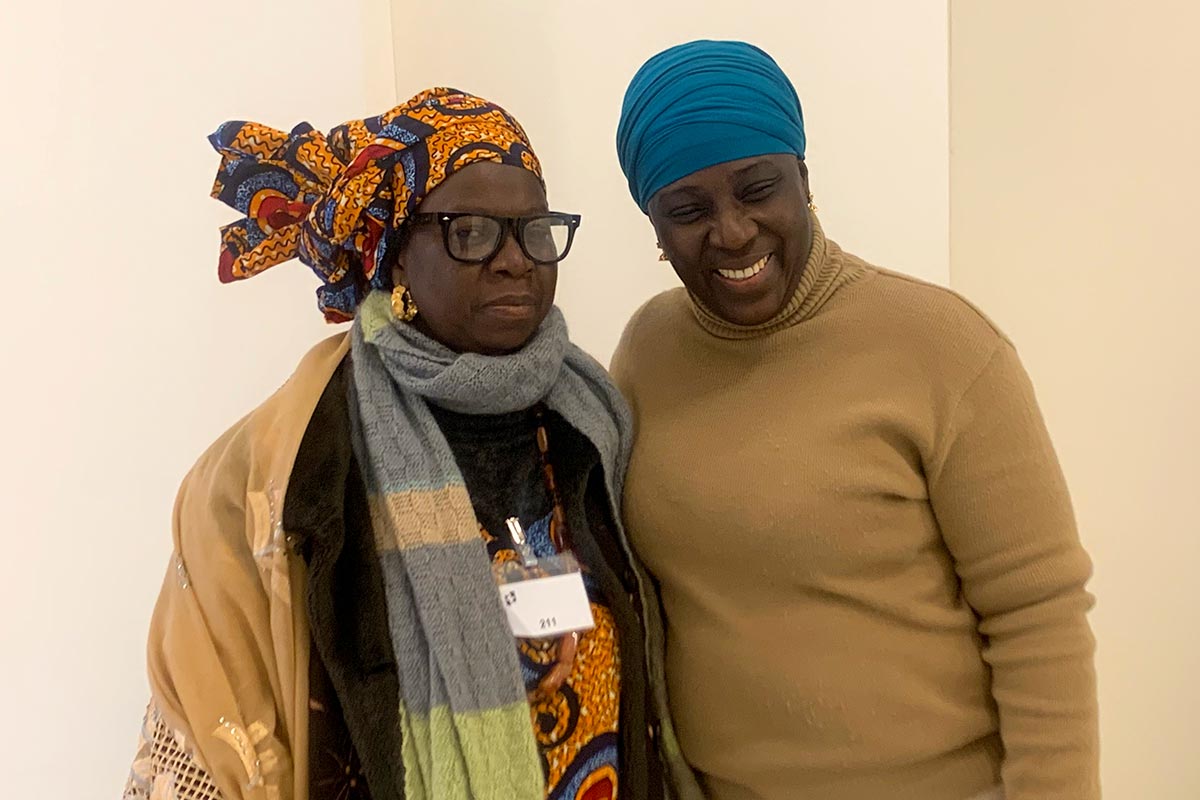
Was Sonko present?
Sonko denied allegations that he had knowledge of the tortures the witnesses were subjected to and denied giving any orders. Ngum told the court that he saw Sonko at the Police Intervention Unit when they were arrested, but Jawara and Camara could not confirm his presence there. “On 14 April I was not at the PIU and I said it during proceedings. Several people have said today that they did not see me there, including Fatou Camara and Fatoumata Jawara,” the accused stated. He also denied being part of any interrogation panel at the NIA. According to Ngum, Sonko and Yankuba Badjie, the director general of the NIA, had given instructions that they be given VIP treatment. “The VIP treatment means we should be beaten.”
“I heard the Interior minister say anyone who plays with the President, you would be dinner for the vultures,” Ngum testified.
“Somebody who was not there, how can he give instructions?” Sonko retorted. He referred to the “the NIA 9 trial”, where several former leaders of the NIA were sentenced to death in July 2022 in the Gambia. Ngum testified in this trial in 2018, Sonko said, and did not mention seeing him at the Intervention Unit the day they were arrested or that he had given instructions for them to be given VIP treatment.
The defence started to play a video in court. It shows the detained protesters at the NIA. The defence wanted to show that Sonko was not at the NIA investigation panel. But the victims took offence, as it is a video that shows their victimisation. And the court asked that the video be stopped even before the majority in the room could notice. “We just wanted to prove that Sonko was not at that panel that Modou Ngum said he saw him. If you watch the video, you see that Sonko is not there,” the defence lawyer told us during a court break.
The accused was informed that the video was already in the court’s file. He said he was “shocked” when he watched the victims’ interrogation video. “I could not watch it for a second time because we are all Gambians and we are all brothers and sisters. And I was also touched by Fatoumata Jawara’s last statement yesterday. But to sum it all I was really shocked, and it was wrong and it was unacceptable.”
Solo Sandeng’s death
Solo Sandeng was a prominent figure in the UDP. He led the protest in 2016. Following his arrest, about 21 members of UDP who demanded that Sandeng be released dead or alive, were arrested, including the party leader, Ousainu Darboe. They were detained at Mile 2 prison. (They would only be released after Jammeh’s fall in early 2017.) In a June 2016 court affidavit the State admitted that Sandeng was dead. He was said to have died from “shock” and “respiratory failure”.
Yankuba Badjie, former NIA director, Sheikh Omar Jeng, former NIA operations director, Baboucarr Sallah, Masireh Tamba, and Lamin Darboe, were sentenced to death in July 2022 by a Gambian court for their involvement in the death of Solo Sandeng. The doctor who forged the death certificate of the victim, Lamin Lang Sangyang, was given ten years in prison for forgery. Following the completion of their trial – known as the “NIA 9 trial” – a state funeral and tribute service was held in Sandeng’s honour on January 10, 2023. His body was finally handed over to his family six years after the murder.
According to Sonko, he learnt of the death of Sandeng on April 16, 2016. To him, the protesters were not political prisoners. “They violated the laws of The Gambia and were arrested, and sentenced accordingly,” he said. “On April 14, 2016, Solo Sandeng deliberately organised a demonstration without requiring a valid permit from the IGP [Inspector General of the Police]. And the demonstration, as I understand it from Modou Ngum, was supposed to include other opposition parties as well. They refused to participate because Modou Ngum never had a permit to do so. Even some of the UDP members who were with him in the bureau [of the UDP] also refused to participate and went home because they all knew that it was unlawful to plan a demonstration without a permit.”
“Law and order”
One of the prosecutors confronted Sonko with a June 1, 2016 video, where he made a remark at Yahya Jammeh’s “Meet the People” tour in Tallinding, a neighbourhood in the capital city. The court did not allow for the whole video to be played as there was already a translation done in German.
“If anyone does it [a demonstration of any kind], that person would regret it,” Sonko declared at the meeting. “I think what I said in this particular meeting in Tallinding should be put in context,” explained Sonko in court. “My statement has not caused what happened on the 14th of April 2016. It was in reaction to what happened on 14th of April 2016,” he said, also referring to a students’ demonstration in 2000 that resulted in the deaths of ten or eleven people and in massive destruction of public and private properties. “That trauma still remains in a lot of families,” the accused stated. “So in other words, the emphasis here was law and order. But it was not meant to deny people permit as there was no evidence to suggest that after this protest people were denied permit.”
Fatoumatta Sandeng is the daughter of Solo Sandeng and one of the plaintiffs in the Swiss case, although she is not a witness. “The first time I sat in the courtroom and we started talking about this [April 14 event] and Sonko sat there, it was really surreal. I mean, you had to process a lot. Even now, there’s a lot to process but it’s amazing that this is going on and victims are facing Sonko. You know, confronting him with questions and things that he has done and you see the power that you possess and how powerless a perpetrator is, that’s history in the making,” she said out of court. “We all know that Solo went out to protest because it was the only option to be heard. He was ready to face the consequences of being taken to the courts but not to be killed.”



